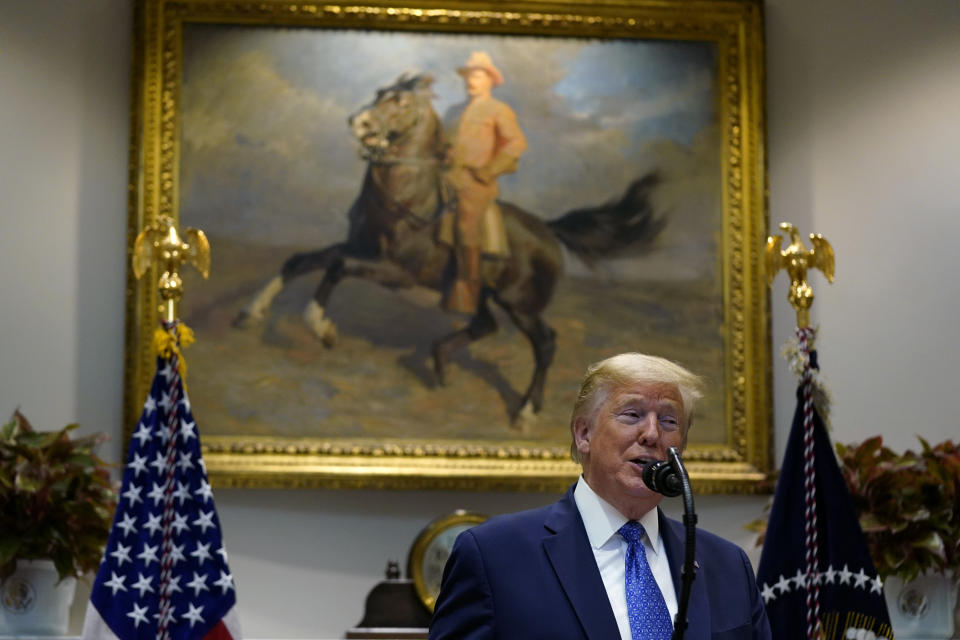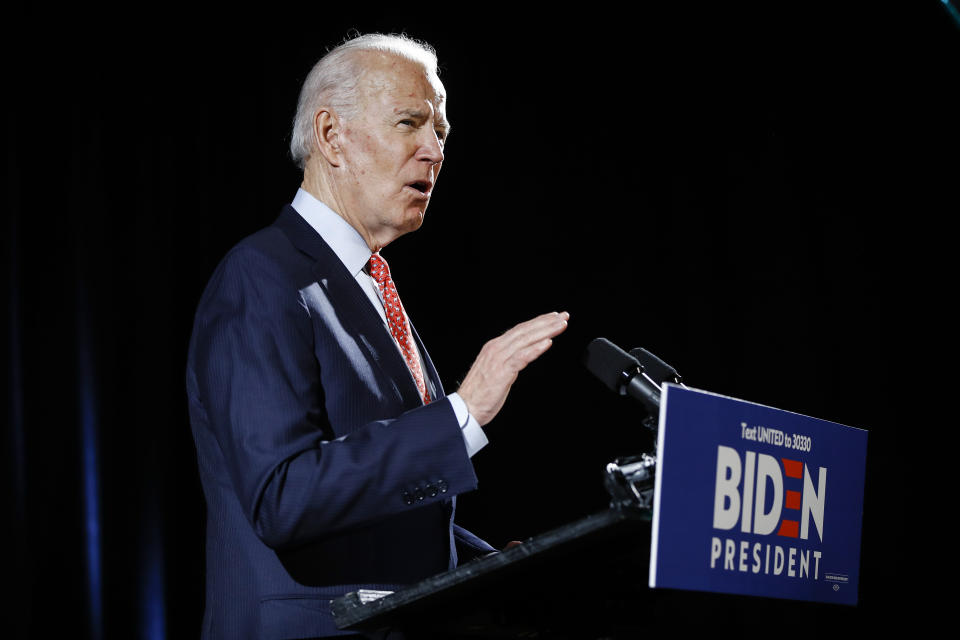How Biden wallops Trump
First, the disclaimer: Forecasts can be wrong, as everybody learned from Donald Trump’s startling win in the 2016 president election. No prediction is bulletproof.
Now, the shocker: Democratic presidential contender Joe Biden might not just beat Trump in November, but wallop him. The election model run by forecasting firm Oxford Economics now sees Biden beating Trump by historic margins, due to an economy deeply damaged by the coronavirus recession. Before the recession, the model showed Trump winning in a close race.
Widespread business shutdowns meant to stop the spread of the coronavirus have caused the loss of 37 million jobs since the end of March – the biggest drop in employment since the Great Depression in the 1930s. Some of those layoffs are temporary, but the unemployment rate, now 14.7%, will still probably be around 10% on Election Day. That’s three times higher than it was before the virus, and comparable to the worst period of the last recession, which began in 2007. Simply put, many Americans will be worse off on Election Day than they were a year before, some of them feeling desperate.

The key variable in the Oxford model is a sharp economic contraction in swing states that fuels dissatisfaction with Trump and his fellow Republicans, and bolsters Democratic turnout. In the model, Biden, the former vice president, wins all the usual Democratic states plus seven states Trump won in 2016: Iowa, Michigan, Missouri, North Carolina, Ohio, Pennsylvania and Wisconsin.
The outcome would give Biden 65% of the popular vote, and Trump just 35%. Biden would win the electoral vote 328 – 210, the worst womping of an incumbent president since Jimmy Carter lost to Ronald Reagan in 1980. In 2016, Trump lost the popular vote to Hillary Clinton, 48% to 46%, but swing state victories gave him a 306-232 electoral college win. The Oxford model predicted Hillary Clinton’s popular vote win, but not Trump’s electoral college margin. In 18 presidential elections dating to 1948, the Oxford model got the popular vote winner wrong only twice, in 1968 and 1976.
Before the virus arrived, Oxford forecast Trump winning reelection with a 55% popular-vote margin. The reeling economy and Trump’s halting response to the crisis have obviously helped Biden. Polls show Biden with a 4 to 5 point lead over Trump nationally. Biden also leads in most of the swing states likely to determine the winner in November. Mark Zandi of Moody’s Analytics recently told Yahoo Finance his firm’s election forecasting tool also switched from Trump to Biden recently, though details aren’t publicly available yet.

Turnout is crucial in elections, and depressed Democrat turnout—because of the coronavirus, lack of enthusiasm for Biden or some other reason—would help Trump. High Democratic turnout, on the other hand, could generate an ever more decisive Biden win. In the Oxford model, if Democrat turnout is as strong as it was in 2008, when voters sent Barack Obama to the White House, Biden would win Florida, Texas and other traditionally red states, for a 434 – 104 electoral college stampede. A decisive Biden win would probably also mean Democrats retake control of the Senate, for complete control of the federal government.
Trump seems to know he’s in trouble, one reason he’s pressing hard for states to reopen quickly, even if it means more coronavirus infections and deaths. But there’s little he can do at this point to prevent the economy on Election Day from being far worse than it was a year before. Trump’s best bet may be convincing voters the virus is an external enemy and he’ll be a better rebuilder than Biden. Yes, yes, yes—it’s possible Trump could pull it off, regardless of what the experts say.
Rick Newman is the author of four books, including “Rebounders: How Winners Pivot from Setback to Success.” Follow him on Twitter: @rickjnewman. Confidential tip line: rickjnewman@yahoo.com. Encrypted communication available. Click here to get Rick’s stories by email.
Read more:
Get the latest financial and business news from Yahoo Finance
Follow Yahoo Finance on Twitter, Facebook, Instagram, Flipboard, SmartNews, LinkedIn, YouTube, and reddit.

 Yahoo Finance
Yahoo Finance 
